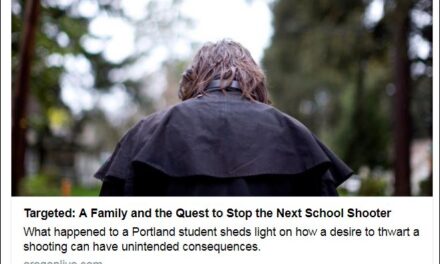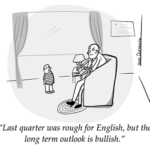The actual practice of SEL is ‘a far cry from many of the claims that are being repeated,’ says an expert and former education journalist.
By Justina Schlund
In 2021, I wrote a piece for The Grade about how to accurately represent social and emotional learning (SEL) as media coverage tripled during the pandemic.
I urged reporters to view SEL as a holistic approach to learning and development, and I cautioned against simplistic narratives that portrayed it as a panacea to the pandemic or fluff time away from academics.
In the year that followed, growing media attention to social and emotional learning has taken a new angle.
Reporting that once focused on SEL as part of the package of strategies that schools were using to respond to the pandemic has increasingly shifted to covering SEL as a political issue.
A recent NPR segment, for example, called SEL “the latest lightning rod in the battles over what gets taught in schools nationwide.”
Reporting that once focused on SEL has increasingly shifted to covering SEL as a political issue.
Despite the political narratives, polls consistently show one clear finding: SEL is not actually controversial to the vast majority of parents and educators. In fact, it enjoys wide support.
So, what role does media coverage play in shaping the narrative, and how can reporters better reflect the reality of schools and families when covering SEL in this political climate?
Here some of the strengths and weaknesses of recent coverage from outlets including NPR, the Washington Post, and NBC News — along with recommendations for improving future coverage of SEL during and after the midterms in two weeks.
Among the most important steps: Use policies and polling data to ground your coverage, show readers what SEL looks like, and cover a broader range of parent perspectives rather than amplifying the loudest voices in the political debates.
Use policies and polling data to ground your coverage. Show readers what SEL looks like. Cover a broader range of parent perspectives
The Good: Comprehensive, research-based, well-established
With more newspaper space and airtime dedicated to SEL, many reporters are presenting a more comprehensive picture of what it is and the research behind it.
Rather than mistakenly pigeon-holing SEL as an add-on program or an intervention for behavior issues, many reporters have demonstrated the range of practices and the relevance to all students.
For example, the Washington Post described SEL as both “embedded into day-to-day teaching and offered on [its] own, in kindergarten through high school. Sometimes it’s as simple as a daily check-in, circle time, or face-to-face greetings for every child… For older students, classes might work on setting goals and creating road maps to achieve them.”
While past coverage of SEL often ran the risk of over-promising or under-promising the impact on children, more recent coverage has focused on clarifying what the research actually says.
In the article about SEL politics, NPR described multiple studies and clarified the range of outcomes related to academic achievement, behaviors, graduation, and employment.
Recent coverage has also shied away from the portrayal of SEL as the latest educational fad, and accurately portrayed the decades-long history of research, practices, and policies that support it.

Above: In How social-emotional learning became a frontline in the battle against CRT, NPR describes multiple studies and clarifies the range of outcomes related to academic achievement, behaviors, graduation, and employment.
The Bad: Controversy-mongering, outlier-multiplying, poll-ignoring
A look at recent polls will show that social and emotional learning remains popular among parents, a top priority for district leaders going into this school year, and a key investment for both red and blue states in terms of COVID relief spending.
In fact, spending plans show that red states are slightly outspending blue states on social and emotional programs, materials, and training at $87 per pupil, compared to $80 per pupil.
But you might not realize just how widely supported SEL is — or understand the full scope of the political narrative at play — from reading recent news coverage that plays up a parental “controversy.”
For example, NBC News suggests that “some parents are sounding the alarm” and the NPR piece shares that “parents and community members have increasingly been fighting the teaching of social-emotional learning in schools.”
However, the examples that follow highlight attacks in far-right news outlets and from conservative activist groups.
While it’s certainly true that some parents have concerns about SEL that are worth elevating, news coverage tends to emphasize political talking points over the actual concerns of most parents.
Many reporters have amplified extreme claims by a small group of vocal activists, rather than seek perspectives that represent a wider range of parents.
For example, many outlets, including Washington Post and NBC, quote the same parent who has organized multiple activist groups and repeatedly claims that SEL is a way to “reprogram our children” and “make them question objective reality.”
But as NPR itself has reported in other places, most parents don’t share this concern. In fact, most parents want schools to focus more on social and emotional learning — and their main concerns are often their children’s mental health and well-being.
Many outlets quote the same parent who claims that SEL is a way to “reprogram our children.”

Above: In Social-emotional learning in schools targeted as new critical race theory, NBC News amplifies extreme claims by a small group of vocal activists.
What to watch for when the things get ugly.
As the politics continue to heat up over the next few weeks leading up to and following the midterms, here are a few suggestions for more robust coverage:
Consider whose concerns get represented around social and emotional learning.
When sharing examples of parent concerns about SEL, go further than the loudest voice in the room. Data shows that parents are certainly concerned about how schools are addressing their children’s social and emotional needs – but those concerns have less to do with politics and more to do with whether schools have available resources and are teaching students emotional skills.
We’ve heard from many parents that those who repeatedly get media attention are activists from outside their communities; other times they’re parents who don’t reflect the demographics and perspectives of most public school families.
Hand the microphone to students themselves, who have many perspectives to share on their social, emotional, and academic learning.
Many of the media stories and political debates around students’ learning feature perspectives from adults speculating about what social and emotional learning looks like in schools and the impact on children – but few ask students to share their actual experiences.
When we visit schools to assess SEL implementation, I find that interviews with students unsurprisingly offer the greatest insights into what’s really happening and shine a different kind of light on priorities and concerns.
Show what SEL actually looks like.
Much of the news coverage about the SEL “controversy” has elevated claims around connections to critical race theory, often repeating cherry-picked examples of a hyperlink on a program website or a mention of a specific word or term that suggests a focus on diversity or inclusion. Rarely has the coverage offered a clear look at how SEL is carried out in most schools.
In my own observations in dozens of schools and classrooms across the country, I can tell you that the actual practice of SEL is a far cry from many of the claims that are being repeated in the media coverage. New York Times reporter Dana Goldstein has offered this tweet on the same notion, which could provide fodder for future news reports.
The actual practice of SEL is a far cry from many of the claims that are being repeated.
Ground the stories of “controversy” in a broader look at data.
Many recent polls have asked parents for their perspectives on schools, education, and SEL and can lend a bigger perspective to what’s happening. If politicians are making claims about eliminating social and emotional learning, look at what their budgets and policies say about their priorities (including how they might be prioritizing the teaching of social and emotional skills without calling it “SEL”).
For example, Florida’s limitations on social and emotional learning in math textbooks received plenty of media coverage, but there was little attention to state legislation passed this year that requires students to receive instruction on social and emotional “life skills.”
Don’t fall for false tradeoffs between SEL and academics.
Some of the political rhetoric suggests that SEL will harm academic priorities. Use research and evidence from schools and districts that have implemented SEL to check out these claims. As more testing data emerges, look at the science of learning and development to discuss academic recovery more comprehensively. It will require addressing the social and emotional dimensions of learning. This can’t be split from academic learning. News coverage shouldn’t treat them separately.

Above: In In ‘social-emotional learning,’ right sees more critical race theory, the Washington Post details the range of SEL practices and their relevance to all students.
As elections take center stage over the next few weeks, journalists must help readers see beyond political talking points, shining a light on the day-to-day realities of children, schools, and families.
Justina Schlund is the senior director of content and field learning at the Collaborative for Academic, Social, and Emotional Learning (CASEL). She’s a former education reporter, teacher, and district SEL director. Reach her on Twitter at @JustinaSchlund.
Previously from The Grade
Social & emotional learning is all the rage; here are 5 smart ways to cover it (2021)
‘Record numbers’ of educators running for office? Accuracy question plagues midterm education coverage (2018)
Your teacher shortage stories are all wrong; here’s how to improve them (2022)
Back to school coverage has been unnecessarily alarmist — again. But there’s still time to improve.
ABOUT THE AUTHOR

Justina Schlund
JUSTINA SCHLUND is the senior director of content and field learning at CASEL. She’s a former education reporter, teacher and district SEL director. Reach her on Twitter at @JustinaSchlund.














